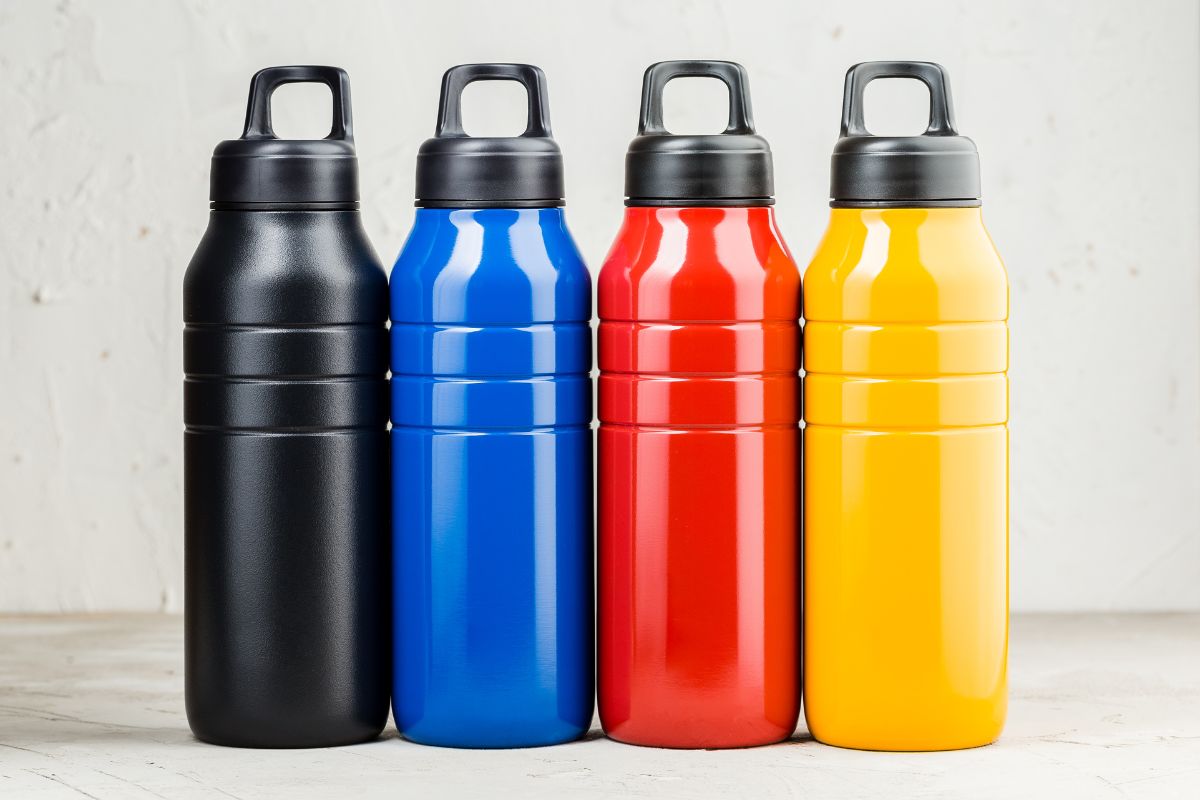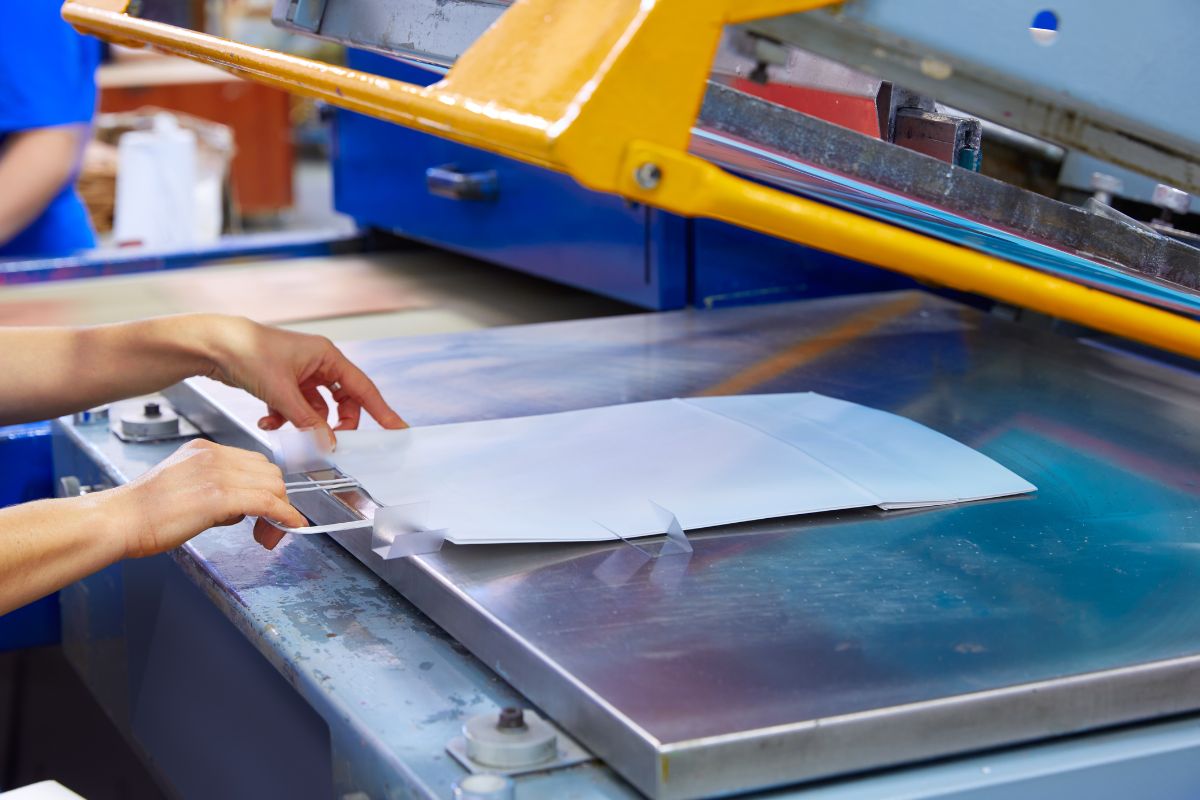Selling water bottles can be a profitable venture if you understand your market and what customers want.
To attract buyers, focus on quality and branding that speaks to your target audience.
Whether it’s stylish tumblers or eco-friendly options, presenting a product that meets customer needs is key to standing out.


You need to consider various factors that will help you succeed.
Select the right materials, designs, and features that appeal to your customers.
Creating effective marketing strategies and choosing the right sales channels will also play a significant role in your success.
By effectively combining quality products with strong branding, you can make your water bottles appealing to consumers.
As you navigate this market, keep your customers’ preferences in mind to cultivate loyalty and drive sales.
Understanding the Market


Knowing the market is essential for selling water bottles. You must understand who your potential buyers are and what they are looking for.
Analyzing what is trending in searches can help you shape your marketing strategy effectively.
Identifying Your Target Audience
Defining your target audience is the first step. Think about who would be most interested in buying water bottles or tumblers. Your target audience may include:
- Active individuals who need hydration during workouts.
- Eco-conscious consumers looking for reusable options to reduce waste.
- Students and professionals who want stylish designs.
Brands like Owala, CamelBak, and Contigo are popular among these groups.
Knowing their preferences for durability or design can help you create targeted messages.
Conduct surveys or use social media insights to gather data. This information will allow you to market effectively and meet potential customers’ needs.
Analyzing Trending Searches
Monitoring trending searches helps you understand what people want. Use tools like Google Trends to see popular terms related to water bottles.
You might find keywords such as “eco-friendly water bottle,” “insulated tumbler,” or “best reusable bottles.”
Focus on what features customers are searching for. Are they interested in design, materials, or brands?
For instance, some may prefer bottles from Owala for their sleek look, while others might choose CamelBak for superior insulation.
Keeping an eye on trends lets you adapt your offerings. You can create more appealing and relevant products for today’s market.
Product Selection


Choosing the right products is essential for selling water bottles. Focus on quality, variety, and appealing themes to attract customers. Here are key areas to consider.
Choosing Quality Water Bottles
When selecting water bottles, prioritize quality materials. Look for BPA-free options to ensure safety. Stainless steel is a popular choice due to its durability and resistance to rust.
Consider vacuum-insulated designs. These bottles keep your drinks cold for hours, appealing to active buyers. Make sure the lids are leak-proof and user-friendly.
You might also offer a range of sizes, from travel-friendly 12-ounce bottles to larger 32-ounce models. This variety can cater to different lifestyles, making it easier for customers to find what suits them best.
Diverse Tumbler Options
Incorporating tumblers into your selection can enhance your product line. Look for vacuum-insulated stainless steel tumblers. They are perfect for keeping beverages hot or cold.
Consider a range of designs. Offering themed tumblers like ones from popular culture can attract fans.
For example, consider Disney tumblers or a Dragon Ball Z tumbler. Such designs resonate with collectors and gift buyers.
You can also provide eco-friendly alternatives. Glass or stainless steel tumblers are great for those who prefer sustainable products. Highlight their benefits in your marketing to attract eco-conscious shoppers.
Specialty Themes and Designs
Themed products can create a strong appeal. For example, Harry Potter thermal mugs and Nightmare Before Christmas tumblers cater to specific fan bases.
Make sure to research trending themes regularly. This helps to keep your inventory relevant and exciting.
You can also explore seasonal designs, such as summer beach themes or winter holiday styles.
Including popular characters, like Bluey or Beetlejuice, can attract attention. Unique designs will set your products apart from competitors. Always consider how the design enhances the functionality of the products.
Branding and Customization


Establishing a strong brand and offering customization options can help your water bottle business stand out. These elements are essential for attracting customers and building loyalty.
Creating a Unique Brand Identity
A unique brand identity is key to capturing attention in the crowded bottled water market. Start with a memorable name and logo that reflect your brand values. Consider these elements:
- Color Scheme: Choose colors that convey the message you want to send. For example, blue suggests purity and freshness.
- Typography: Use fonts that are easy to read and match your brand’s style.
Your brand story is also important. It should connect emotionally with customers, explaining why your water bottles are special.
Use platforms like social media to showcase your brand’s personality and engage with your audience.
Print on Demand Services
Print on demand services allow you to create custom water bottles without upfront costs. This method is great for testing different designs before committing to large orders. Here are some benefits:
- No Inventory: You only pay for what you sell. This reduces financial risk.
- Customization: You can offer personalized designs, making your products more appealing to customers.
Many platforms provide user-friendly tools for designing bottles. You can create customized tumblers, ensuring your products meet customer demands.
By leveraging print on demand services, you can easily adapt to market trends while keeping your brand fresh and relevant.
Marketing Strategies


To effectively sell water bottles, you need to implement strong marketing strategies. Focusing on online channels, engaging content, social media interactions, and targeted email campaigns can help connect you with your target audience and boost sales.
Online Advertising
Online advertising is crucial for reaching potential customers. You can use platforms like Google Ads and Facebook Ads to target specific demographics based on interests and behavior.
Focus on creating eye-catching visuals that showcase the unique features of your water bottle.
Consider using retargeting ads to reach visitors who didn’t make a purchase the first time. This reminder can encourage them to return and buy.
Also, use clear calls to action (CTAs) in your ads, directing users to your website or product pages for easy purchasing options.
Content Marketing
Content marketing helps establish your brand as an authority in hydration and wellness. You can create blog posts, infographics, or videos that highlight the benefits of staying hydrated and how your water bottles support this goal.
Use keywords related to trending searches to attract organic traffic. This approach not only brings in new audiences but also keeps them engaged with helpful information.
Consider including customer testimonials or success stories around using your water bottles, as they build trust and credibility with potential buyers.
Social Media Engagement
Social media platforms are essential for engaging with your target audience. You can choose popular platforms like Instagram, Facebook, or TikTok to showcase your water bottles in action.
Share high-quality images, user-generated content, and short videos demonstrating how your bottles fit into an active lifestyle.
Utilize hashtags related to hydration, fitness, and wellness to expand your reach. Engage with your followers by responding to comments and messages, which helps build a community around your brand.
Run contests or giveaways to encourage sharing and increase visibility.
Email Marketing
Email marketing allows you to directly reach customers interested in your water bottles.
Build a subscriber list by offering incentives, like discounts or free resources on hydration. Once you have a list, send regular newsletters that provide valuable content along with product promotions.
Segment your email list based on customer interests or past purchases. This tactic allows you to send personalized offers tailored to specific groups.
Highlight special promotions, new products, or hydration tips to keep your audience engaged and encourage repeat purchases.
Sales Channels


Choosing the right sales channels is essential for selling water bottles successfully. Each channel offers unique opportunities for reaching customers and maximizing sales. Below are key methods you can consider.
E-Commerce Platforms
Selling water bottles online is one of the most effective ways to reach a larger audience. E-commerce platforms like Amazon, eBay, and Etsy allow you to set up a store quickly. You can easily manage your inventory and orders through these sites.
To start, create appealing product listings with high-quality images and detailed descriptions.
Highlight unique features, such as eco-friendly materials or customizable designs. Use customer reviews to build trust and credibility.
Consider adding tumblers for sale alongside your water bottles to attract a wider audience. Offering bundles or discounts can also encourage more purchases.
Remember to promote your online store through social media and digital marketing for better visibility.
Retail Distribution
Retail distribution involves placing your water bottles in physical stores. Partnering with local shops, supermarkets, and gyms can increase your visibility.
Create a compelling sales pitch for retailers to illustrate how your product benefits their customers.
Having a visual display in-store can catch the eyes of shoppers. Offer promotional deals or samples to entice retailers and customers alike. Providing eye-catching packaging enhances brand appeal and encourages impulse buys.
Consider targeting specialty stores focused on health, fitness, or outdoor activities. These places attract customers who already value hydration products.
Building relationships with store owners can also lead to repeat business and more exposure.
Direct Sales
Direct sales allow you to connect with customers personally, making your approach unique. You can sell water bottles at events, fairs, or local markets. Setting up a booth can create a lively atmosphere around your brand.
Engage with customers face-to-face to understand their preferences and answer questions. This personal touch can drive sales and build loyalty.
Consider offering workshops on hydration benefits or product demonstrations to showcase your bottles.
Additionally, use networking to sell water bottles through referrals. Encourage satisfied customers to refer friends. Offering incentives for referrals can lead to more sales and expand your customer base.
Customer Experience


Creating a positive customer experience is vital for selling water bottles. Focus on service excellence, educating customers about product benefits, and offering solid after-sale support. Each of these elements contributes to customer loyalty and satisfaction.
Customer Service Excellence
Providing excellent customer service is key to retaining customers. Respond quickly to inquiries, whether through social media, email, or phone calls. A friendly and knowledgeable staff can make a difference.
- Personal Touch: Greet customers warmly and address their specific needs.
- Simplified Process: Ensure purchasing is easy on your website, with clear navigation and payment options.
Quick responses and a welcoming vibe can enhance customer trust and lead to repeat sales.
Product Education
Educating customers about the benefits of your water bottles helps them make informed decisions. Understanding features like materials, durability, and design can influence their purchase.
- Informative Content: Use blog posts, videos, or brochures to share information.
- Demonstrations: Show how your bottles can fit into a sustainable lifestyle.
When customers know what they are buying, they feel more satisfied with their choices. This knowledge builds the confidence they need to recommend your products to others.
After-Sale Support
After-sale support makes a lasting impression on customers. It demonstrates that you care about their experience even after they have made a purchase.
- Follow-Up Communication: Send a thank-you email after a purchase and invite feedback.
- Assistance with Issues: Be ready to help with any problems, whether it is a refund or a replacement.
Good after-sale support can turn a one-time buyer into a loyal customer. It shows that you value their satisfaction, which is essential in building long-term relationships.
Compliance and Safety


When selling water bottles, you must follow safety regulations. These rules help ensure that your products are safe for consumers.
Key Regulations to Consider:
-
FDA Regulations: The U.S. Food and Drug Administration (FDA) sets standards for bottled water. You need to comply with these laws to sell legally.
-
State Regulations: Each state may have its own rules. Check local laws before starting your business to stay compliant.
You might want to emphasize products like BPA-free travel tumblers. These options are safer for consumers. BPA, or bisphenol A, can harm health, so it’s crucial to offer safe alternatives.
Licenses and Permits:
To sell water bottles, you may need various licenses. This can include:
- A business license
- A health permit
- A sales tax permit
If you plan to sell flavored water products, like licorice-infused options, check if there are additional regulations for flavoring.
Testing and Quality Assurance:
Before selling, ensure your water bottles meet safety standards. Regular testing can prevent issues related to contamination. Always keep quality assurance a top priority.
Sustainability Practices


Using sustainable methods can help your water bottle business stand out while also benefiting the environment. Focus on using eco-friendly materials and reducing waste in your production processes.
Eco-Friendly Materials
Selecting the right materials is crucial for sustainability. Consider using recycled plastics, stainless steel, or glass for your water bottles. These materials are not only durable but also minimize environmental impact.
- Recycled Plastics: Using recycled materials reduces the demand for new plastic production. Ensure the recycling process is certified for quality and safety.
- Stainless Steel: This material is reusable and can keep beverages cold or hot for hours. It is also recyclable at the end of its life cycle.
- Glass: It is fully recyclable and free of harmful chemicals. Glass bottles can be made attractive with various designs.
By promoting these materials in your marketing, you highlight your commitment to sustainability.
Waste Reduction Initiatives
Implementing waste reduction strategies is key to a sustainable business. You can reduce excess production and packaging waste through various initiatives.
- Minimal Packaging: Use biodegradable or recyclable packaging materials. This helps reduce waste and makes your product more appealing to eco-conscious customers.
- Production Efficiency: Streamline your production process to minimize waste. Monitor the amount of scrap material generated and find ways to recycle it.
- Repair and Reuse Programs: Offer customers ways to repair or refurbish their water bottles. This encourages them to hold on to their products longer.
By focusing on waste reduction, you can lower your environmental footprint and attract customers who care about sustainability.
Scaling Your Business


To grow your bottled water business effectively, focus on key strategies that include investing in technology, expanding your product lines, and building collaborations. These steps can enhance efficiency, attract new customers, and create valuable partnerships.
Investing in Technology
Investing in technology can streamline your operations and improve customer experience. Use automated systems for managing inventory and orders. This not only saves time but also reduces errors, allowing you to focus on growth.
Consider implementing e-commerce solutions to reach a broader market. Online sales can complement your physical presence, helping you access more customers. Use marketing tools like CRM software to understand customer preferences and tailor your outreach efforts.
Digital marketing strategies such as social media advertising are cost-effective ways to promote your products. Use analytics to track performance and adjust your campaigns based on what works best.
Expanding Product Lines
Diversifying your product offerings can attract a wider range of customers. Think about introducing flavored water, sparkling water, or eco-friendly packaging options. Each new product can draw in different segments of the market.
Conduct market research to identify gaps in the current offerings. Knowing what your competitors provide and what consumers desire gives you a solid foundation for new products.
Once you have new items ready, invest in promoting them. Create bundled deals or seasonal promotions to encourage trial purchases. Highlight unique features of each product, like health benefits or sustainability, to create a distinct brand image.
Collaborations and Partnerships
Establishing collaborations can streamline growth and open new opportunities. Look for partnerships with local businesses, gyms, or events. These can serve as additional sales outlets for your products.
Co-branding with other reputable brands can enhance your visibility. Joint promotions or bundled products can attract more customers to both parties. Consider sponsoring events or running competitions, placing your brand directly in front of potential buyers.
Networking within your industry can lead to valuable insights and connections. Attend trade shows and local business events to meet potential partners and gather ideas that can fuel your growth.
Frequently Asked Questions


Selling water bottles can be a great business opportunity. There are many factors to consider, including starting your business, legal requirements, effective selling strategies, pricing, and potential profits.
How can I start a business selling bottled water?
To start a business selling bottled water, begin by researching your market. Identify who your customers are and what type of water they prefer. Next, create a business plan that outlines your goals, startup costs, and marketing strategies.
What are the legal requirements for selling bottled water on the streets?
You may need a permit or license to sell bottled water on the streets, depending on your location. Check with your local government or health department to find out the regulations in your area. Make sure to comply with health and safety standards.
Where are the best places to sell bottled water?
The best places to sell bottled water include parks, beaches, sporting events, and festivals. Look for areas with high foot traffic where people may want a refreshing drink. You can also consider selling at events or locations where people are active or outdoors.
What strategies can I use to sell my water bottles to customers effectively?
To sell water bottles effectively, highlight unique features like eco-friendliness or stylish designs. Engage with customers through promotions or bundle deals. Use social media to reach potential buyers and share customer experiences.
How much should I charge for a water bottle?
Pricing depends on several factors, including your costs and what competitors charge. Generally, bottled water prices range from $1 to $3. Ensure your price covers costs while still appealing to customers.
Can you make a significant profit from selling water bottles?
You can make a profit selling water bottles, but it varies by location and strategy.
Keeping costs low and understanding your market can help boost profitability.
Selling in high-traffic areas or offering unique products can also increase your earnings.



